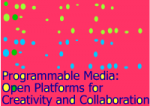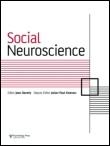Feb 17, 2007
NTT DoCoMo breathalyzer phone
Via Medgadget

The NTT DoCoMo breathalyzer phone sends a text message to your boss before you get behind the wheel of your company's bus or truck.
Gizmodo report:
KDDI Corp has developed a breathalyzer/cellphone combo that prevents inebriated taxi and bus drivers in Japan from getting behind the wheel. Companies that buy the phone will require their employees to blow into the breathalyzer before getting behind the wheel. The phone then measures how drunk (or sober) you are and sends the results to your company's computer along with a snapshot of the your mug and your location. If you've had too much sake, the phone will notify your boss who'll most likely fire your drunk ass. The phone and software cost a combined $1,250, which shouldn't be too much money for a big company to spend.
20:36 Posted in Persuasive technology | Permalink | Comments (0) | Tags: persuasive technology
Mindfulness meditation versus relaxation training
A randomized controlled trial of mindfulness meditation versus relaxation training: effects on distress, positive States of mind, rumination, and distraction.
Ann Behav Med. 2007 Feb;33(1):11-21
Authors: Jain S, Shapiro SL, Swanick S, Roesch SC, Mills PJ, Bell I, Schwartz GE
Background: Although mindfulness meditation interventions have recently shown benefits for reducing stress in various populations, little is known about their relative efficacy compared with relaxation interventions. Purpose: This randomized controlled trial examines the effects of a 1-month mindfulness meditation versus somatic relaxation training as compared to a control group in 83 students (M age = 25; 16 men and 67 women) reporting distress. Method: Psychological distress, positive states of mind, distractive and ruminative thoughts and behaviors, and spiritual experience were measured, while controlling for social desirability. Results: Hierarchical linear modeling reveals that both meditation and relaxation groups experienced significant decreases in distress as well as increases in positive mood states over time, compared with the control group (p < .05 in all cases). There were no significant differences between meditation and relaxation on distress and positive mood states over time. Effect sizes for distress were large for both meditation and relaxation (Cohen's d = 1.36 and .91, respectively), whereas the meditation group showed a larger effect size for positive states of mind than relaxation (Cohen's d =.71 and .25, respectively). The meditation group also demonstrated significant pre-post decreases in both distractive and ruminative thoughts/behaviors compared with the control group (p < .04 in all cases; Cohen's d = .57 for rumination and .25 for distraction for the meditation group), with mediation models suggesting that mindfulness meditation's effects on reducing distress were partially mediated by reducing rumination. No significant effects were found for spiritual experience. Conclusions: The data suggest that compared with a no-treatment control, brief training in mindfulness meditation or somatic relaxation reduces distress and improves positive mood states. However, mindfulness meditation may be specific in its ability to reduce distractive and ruminative thoughts and behaviors, and this ability may provide a unique mechanism by which mindfulness meditation reduces distress.
20:27 Posted in Meditation & brain | Permalink | Comments (0) | Tags: meditation
Mindfulness meditation and alcohol use
The role of thought suppression in the relationship between mindfulness meditation and alcohol use.
Addict Behav. 2007 Jan 23;
Authors: Bowen S, Witkiewitz K, Dillworth TM, Marlatt GA
Previous studies have demonstrated that attempts to suppress thoughts about using substances may actually lead to increases in substance use. Vipassana, a mindfulness meditation practice, emphasizes acceptance, rather than suppression, of unwanted thoughts. A study by Bowen and colleagues examining the effects of a Vipassana course on substance use in an incarcerated population showed significant reductions in substance use among the Vipassana group as compared to a treatment - usual control condition [Bowen S., Witkiewitz K., Dillworth T.M., Chawla N., Simpson T.L., Ostafin B.D., et al. (2006). Mindfulness Meditation and Substance Use in an Incarcerated Population. Psychology of Addictive Behaviors.]. The current study further examines the mediating effects of thought suppression in the relationship between participation in the course and subsequent alcohol use. Those who participated in the course reported significant decreases in avoidance of thoughts when compared to controls. The decrease in avoidance partially mediated effects of the course on post-release alcohol use and consequences.
20:26 Posted in Meditation & brain | Permalink | Comments (0) | Tags: meditation
Brain Scan Mind Reading 70% Accurate
Researchers are making progresses in predicting the intention of subjects with reasonable accuracy:
Now researchers have been able to decode these secret intentions from patterns of their brain activity. They let subjects freely and covertly choose between two possible tasks - to either add or subtract two numbers. They were then asked to hold in mind their intention for a while until the relevant numbers were presented on a screen. The researchers were able to recognize the subjects intentions with 70% accuracy based alone on their brain activity - even before the participants had seen the numbers and had started to perform the calculation.
That quote is from a press release from the Max Planck Institute, Revealing secret intentions in the brain
20:23 Posted in Research tools | Permalink | Comments (0) | Tags: research tools
Center for Neurotechnology Studies Launched at Potomac Institute for Policy Studies
from Brainwaves
The Potomac Institute for Policy Studies has announced the launch of The Center for Neurotechnology Studies (CNS) which intends on providing neutral, in-depth analysis of matters at the intersection of neuroscience and technology—neurotechnology—and public policy. The Center will anticipate ethical, legal, and social issues (ELSI) associated with emerging neurotechnology, and shepherd constructive discourse on these issues. It will provide a forum for reasoned consideration of these subjects both by experts and the public.
Read the full post on Brainwaves blog
20:18 Posted in Neurotechnology & neuroinformatics | Permalink | Comments (0) | Tags: neurotechnology
Cognitive Informatics
On Cognitive Informatics
Yingxu Wang, Brain and Mind, Volume 4, Number 2 / August, 2003
Supplementary to matter and energy, information is the third essence for modeling the natural world. An emerging discipline known as cognitive informatics (CI) is developed recently that forms a profound interdisciplinary study of cognitive and information sciences, and tackles the common root problems sharing by informatics, computing, software engineering, artificial intelligence, cognitive science, neuropsychology, philosophy, linguistics, and life science. CI focuses on internal information processing mechanisms and the natural intelligence of the brain. This paper describes the historical development of informatics from the classical information theory and contemporary informatics, to CI. The domain of CI, and its interdisciplinary nature are explored. Foundations of CI, particularly the brain versus the mind, the acquired life functions versus the inherited ones, and generic relationships between information, matter, and energy are investigated. The potential engineering applications of CI and perspectives on future research are discussed. It is expected that the investigation into CI will result in fundamental findings towards the development of next generation IT and software technologies, and new architectures of computing systems.
20:09 Posted in Cognitive Informatics | Permalink | Comments (0) | Tags: cognitive informatics
Movement feedback in rehabilitation medicine
From diagnostics to therapy-conceptual basis for real-time movement feedback in rehabilitation medicine.
Biomed Tech (Berl). 2006;51(5-6):299-304
Authors: Schablowski-Trautmann M, Kögel M, Rupp R, Mikut R, Gerner HJ
Recently, locomotion therapy on a treadmill has become part of rehabilitation programs for neurological gait disorders (spinal cord injury, hemiplegia). Instrumental gait analysis is an important tool for quantification of therapy progress in terms of functional changes in a patient's gait patterns. Whereas most of current applications focus on diagnostic assessment of gait, the current paper presents an extension of movement analysis offering enhanced therapeutic options. Specifically, the conceptual basis for application of real-time movement feedback in rehabilitation medicine is outlined and is put into context with recent developments in the field. A first technical realization of these concepts is presented and first results are reported. Furthermore, open questions towards a universal environment for movement feedback in rehabilitation medicine are discussed and future lines of research are identified.
20:02 Posted in Biofeedback & neurofeedback | Permalink | Comments (0) | Tags: biofeedback, neurofeedback
Feb 06, 2007
Diagnosis and rehabilitation of patients with hemispatial neglect using VR
Diagnosis and rehabilitation of patients with hemispatial neglect using virtual reality technology.
Conf Proc IEEE Eng Med Biol Soc. 2004;7:4908-11
Authors: Baheux K, Yoshikawa M, Tanaka A, Seki K, Handa Y
Our objective is to develop and test a system for diagnosis and rehabilitation of patients with hemispatial neglect. The system consists of a 3D-haptic virtual world seen through stereo shutter-glasses. Patients interact by manipulating a haptic interface. The software adapts the virtual world accordingly to haptic interface and eye tracking feedback. Offline analysis is possible by reviewing recorded data. Observations made during experimentations with hemiplegics patients and future works with hemispatial neglect patients are discussed.
16:30 Posted in Cybertherapy, Virtual worlds | Permalink | Comments (0) | Tags: cybertherapy
Programmable Media: Open Platforms for Creativity and Collaboration

Programmable Media: Open Platforms for Creativity and Collaboration :: A symposium organized and presented by New Radio and Performing Arts, Inc., hosted by Pace Digital Gallery :: Date: March 2, 2007 :: Time: 10 am to 3:30 pm :: Venue: Multipurpose Room, 1 Pace Plaza, Pace University :: Contact: Helen Thorington (newradio[at]turbulence.org); Jillian McDonald (jmcdonald2[at]pace.edu). Registration is encouraged: email turbulence at turbulence.org.
In July 2004 the not-for-profit media organization New Radio and Performing Arts, Inc. began the networked_performance blog to chronicle observations that internet based creative practice is expanding due to the ready availability of wireless, mobile, and GPS computational devices and the emergence of the programmable web. We observe that artists, designers and researchers working in digitally networked and programmable environments are increasingly making projects that are media platforms, tools and services which are open and contingent upon participation and the contribution of content to realize them.
Programmable Media: Open Platforms for Creativity and Collaboration, hosted by Pace University, will explore two forms of current practice. First, the creation of original software to create tools and services for creative and social use, such as a freely available 3-D drawing tool and musical instrument, or a public commons meta layer conceived as a continuous public space for collaboration. Second, the creation of original work using the tools available within open platforms such as Second Life and MySpace to build community and raise awareness.
16:24 Posted in Creativity and computers | Permalink | Comments (0) | Tags: creativity and computers
Special issue on ToM
The new issue (number 3-4, September-December 2006) of Social Neuroscience is dedicated to the topic of Theory of Mind.
The special issue is edited by Rebecca Saxe and Simon Baron-Cohen

16:14 Posted in Research tools | Permalink | Comments (0) | Tags: social neuroscience
Mindfulness meditation alleviates depressive symptoms in women with fibromyalgia
Mindfulness meditation alleviates depressive symptoms in women with fibromyalgia: Results of a randomized clinical trial.
Arthritis Rheum. 2007 Jan 31;57(1):77-85
Authors: Sephton SE, Salmon P, Weissbecker I, Ulmer C, Floyd A, Hoover K, Studts JL
OBJECTIVE: Depressive symptoms are common among patients with fibromyalgia, and behavioral intervention has been recommended as a major treatment component for this illness. The objective of this study was to test the effects of the Mindfulness-Based Stress Reduction (MBSR) intervention on depressive symptoms in patients with fibromyalgia. METHODS: This randomized controlled trial examined effects of the 8-week MBSR intervention on depressive symptoms in 91 women with fibromyalgia who were randomly assigned to treatment (n = 51) or a waiting-list control group (n = 40). Eligible patients were at least 18 years old, willing to participate in a weekly group, and able to provide physician verification of a fibromyalgia diagnosis. Of 166 eligible participants who responded to local television news publicizing, 49 did not appear for a scheduled intake, 24 enrolled but did not provide baseline data, and 2 were excluded due to severe mental illness, leaving 91 participants. The sample averaged 48 years of age and had 14.7 years of education. The typical participant was white, married, and employed. Patients randomly assigned to treatment received MBSR. Eight weekly 2.5-hour sessions were led by a licensed clinical psychologist with mindfulness training. Somatic and cognitive symptoms of depression were assessed using the Beck Depression Inventory administered at baseline, immediately postprogram, and at followup 2 months after the conclusion of the intervention. RESULTS: Change in depressive symptoms was assessed using slopes analyses of intervention effects over time. Depressive symptoms improved significantly in treatment versus control participants over the 3 assessments. CONCLUSION: This meditation-based intervention alleviated depressive symptoms among patients with fibromyalgia.
05:38 Posted in Meditation & brain | Permalink | Comments (0) | Tags: meditation
Feb 01, 2007
Google: the future is in mobile phones
From Textually.org




[via Mad4MobilePhones] "It is clear that 2007 will be the year that mobile search query traffic grows substantially. Our current model is to use targeted text ads and we have evidence that the monetization of those ads is higher than in non-mobile uses. So it looks like the advertising revenue on a per-search query is likely to be significantly higher on mobile than on non-mobile.
As part of that, we are investing in new categories of using mobile devices. For example, YouTube content is being used and can be viewed on mobile devices in various partnerships that we're doing. Those are as much opportunistic for us, and they're not really driving revenue yet; although in theory, you could imagine a combination of video, video advertising on a mobile phone that would have the best entertainment value but also very, very high monetization rates. We're unlikely to split it out. It's not material today in a financial sense, and more importantly, it's still emerging.
We are making a significant investment in technology around mobile because of the growth rate of mobile and the ultimate scale of that business. You won't really see its financial impact until `08."
22:58 Posted in Wearable & mobile | Permalink | Comments (0) | Tags: mobile, wearable
Flickrfling
FlickrFling is an open source project for people who wish to explore in an innovative and rather surprising way the different data feeds that form the building blocks of today’s virtual world. By pointing the application, let’s say, to the CNN news feed, you will receive the last news in real time - rendered in pictures. The application will choose for each in-coming word an image from flickr’s database tagged with corresponding keywords.
22:53 Posted in Future interfaces | Permalink | Comments (0) | Tags: social computing
Jan 31, 2007
Many Eyes
IBM (Quote) launched a new social computing site today called Many Eyes, which allows users to upload very large data sets, choose different visual representations for the data sets, and engage in an online discussion of what the data reveals. Each visualization will allow for an active discussion to take place and become a common area to share ideas, add insight and understand the visualization in a group setting.
(…)
an attempt to learn whether the principles of crowd-sourcing can be applied to the analysis of visualized data, in the hopes of generating broader and deeper analysis of data.
(source: Internet News)
17:20 Posted in Social Media | Permalink | Comments (0) | Tags: social computing
BuddyCheckService helps seniors
Re-blogged from Textually.org
BuddyCheckService helps seniors that live alone keep their independence. It uses ASR speech technology to enable overtaxed family caregivers to monitor loved ones on a regular basis, and are alerted by text message or call on their mobile phone if there is an emergency.
17:15 Posted in Wearable & mobile | Permalink | Comments (0) | Tags: mobile, wearable
Researcher HCI/usability - Oslo, Norway
Via Usability News
Deadine: 17 February 2007
SINTEF ICT, department of Cooperative and trusted systems, is in the process of hiring a new researcher. The position is within the HCI-group, which works with user-centred development of ICT solutions and user interfaces. The group is strong, and keeps developing through national and international research projects. Our projects encompass service and application areas such as new interactive media, mobile solutions, e-Commerce and e-Government.
Qualifications:
We will be hiring a person with interest for, and ambitions regarding research within the discipline of Human-Computer Interaction. The applicant should have a drive to create new research missions, a desire to communicate research results in academic and popular arenas, and ability to complete deliverables and projects according to specification. Both younger and more experienced applicants will be considered. In particular we will evaluate applicants against the following competency areas:
- User-centred development method
- Statistical analysis
- Data mining
- User interface design
Applicants should have formal education at university level (MSc, PhD, or similar)
We offer
- Continuous opportunity to develop your areas of interest
- Opportunity for innovative work in national and international projects
- Participation in academic publication arenas
- Competitive terms, pension- and insurance schemes, flexible work hours
For the proposal to be processed, we require that your e-mail has attached comprehensive CV, copy of academic certificates/grade cards, and other relevant documentation.
Please submit your proposal no later than February 17, 2007, as an e-mail to our personnel officer Nora Gibb ( nora.gibb@sintef.no )with copy to HCI group leader Asbjørn Følstad(asbjorn.folstad@sintef.no )
17:13 Posted in Research institutions & funding opportunities | Permalink | Comments (0) | Tags: research fundings
New mobile monitoring system from Loughborough University
Via Medgadget



Researchers at Department of Electronic and Electrical Engineering at the Loughborough University in the UK are planning to introduce a portable telemedicine technology to the market. The system enables a doctor to observe remotely up to four different medical signals from a freely moving patient. Signals that can be transmitted include the ECG, blood pressure, oxygen saturation and blood glucose level.
Now Professor Woodward has been awarded a grant by the UK-India Education and Research Initiative (UKIERI), enabling him to join forces with experts in India on the project. Working with the Indian Insitute of Technology Delhi (IIT Delhi), the All India Institute of Medical Sciences, Aligarh Muslim University and London's Kingston University, he is hoping to miniaturise the system, designing 'smart' sensors and mini-processors that are small enough to be carried by patients and able to acquire biomedical data from them. The network of sensors will be linked via a modem to mobile networks and the internet, and to a hospital computer. The device would then be used by doctors to remotely monitor patients suffering from chronic diseases, such as heart disease and diabetes, which affect millions of people across the world.
"Such a 'Mobile Disease Management System' is long overdue," says Professor Woodward. "Especially in view of the proliferation of applications in mobile data communications. It is also achievable in a three-year time frame and should provide a step-change in improving the quality of life of patients needing expert diagnoses, and for those with pre-diagnosed conditions or undergoing post-operative care.
"In the UK, the project will allow a more patient-driven health service, as promoted by the Government to improve the efficiency of health care delivery. In India, the project will link clinics and regional hospitals in remote areas to centres of excellence. As in the UK, the Indian Government is encouraging the integration of new and existing networks, much needed because of a large population spread over a vast area.
Link at Loughborough University...
00:56 Posted in Wearable & mobile | Permalink | Comments (0) | Tags: mobile, wearable
Jan 29, 2007
A Wheelchair That Reads Your Mind
From Wired
read the full story on Wired
16:46 Posted in Brain-computer interface | Permalink | Comments (0) | Tags: brain-computer interface
Jan 28, 2007
Mindfulness based stress reduction for smokers
A pilot study on mindfulness based stress reduction for smokers.
BMC Complement Altern Med. 2007 Jan 25;7(1):2
Authors: Davis JM, Fleming MF, Bonus KA, Baker TB
ABSTRACT: BACKGROUND: Mindfulness means paying attention in the present moment, non-judgmentally, without commentary or decision-making. We report results of a pilot study designed to test the feasibility of using Mindfulness Based Stress Reduction (MBSR) (with minor modifications) as a smoking intervention. METHODS: MBSR instructors provided instructions in mindfulness in eight weekly group sessions. Subjects attempted smoking cessation during week seven without pharmacotherapy. Smoking abstinence was tested six weeks after the smoking quit day with carbon monoxide breath test and 7-day smoking calendars. Questionnaires were administered to evaluate changes in stress and affective distress. RESULTS: 18 subjects enrolled in the intervention with an average smoking history of 19.9 cigarettes per day for 26.4 years. At the 6-week post-quit visit, 10 of 18 subjects (56%) achieved biologically confirmed 7-day point-prevalent smoking abstinence. Compliance with meditation was positively associated with smoking abstinence and decreases in stress and affective distress. CONCLUSIONS: The results of this study suggest that mindfulness training may show promise for smoking cessation and warrants additional study in a larger comparative trial.
22:13 Posted in Meditation & brain | Permalink | Comments (0) | Tags: meditation, mindfulness
Validating the efficacy of neurofeedback for optimising performance
Validating the efficacy of neurofeedback for optimising performance.
Prog Brain Res. 2006;159:421-31
Authors: Gruzelier J, Egner T, Vernon D
The field of neurofeedback training has largely proceeded without validation. Here we review our studies directed at validating SMR, beta and alpha-theta protocols for improving attention, memory, mood and music and dance performance in healthy participants. Important benefits were demonstrable with cognitive and neurophysiological measures which were predicted on the basis of regression models of learning. These are initial steps in providing a much needed scientific basis to neurofeedback, but much remains to be done.
22:10 Posted in Biofeedback & neurofeedback | Permalink | Comments (0) | Tags: neurofeedback








